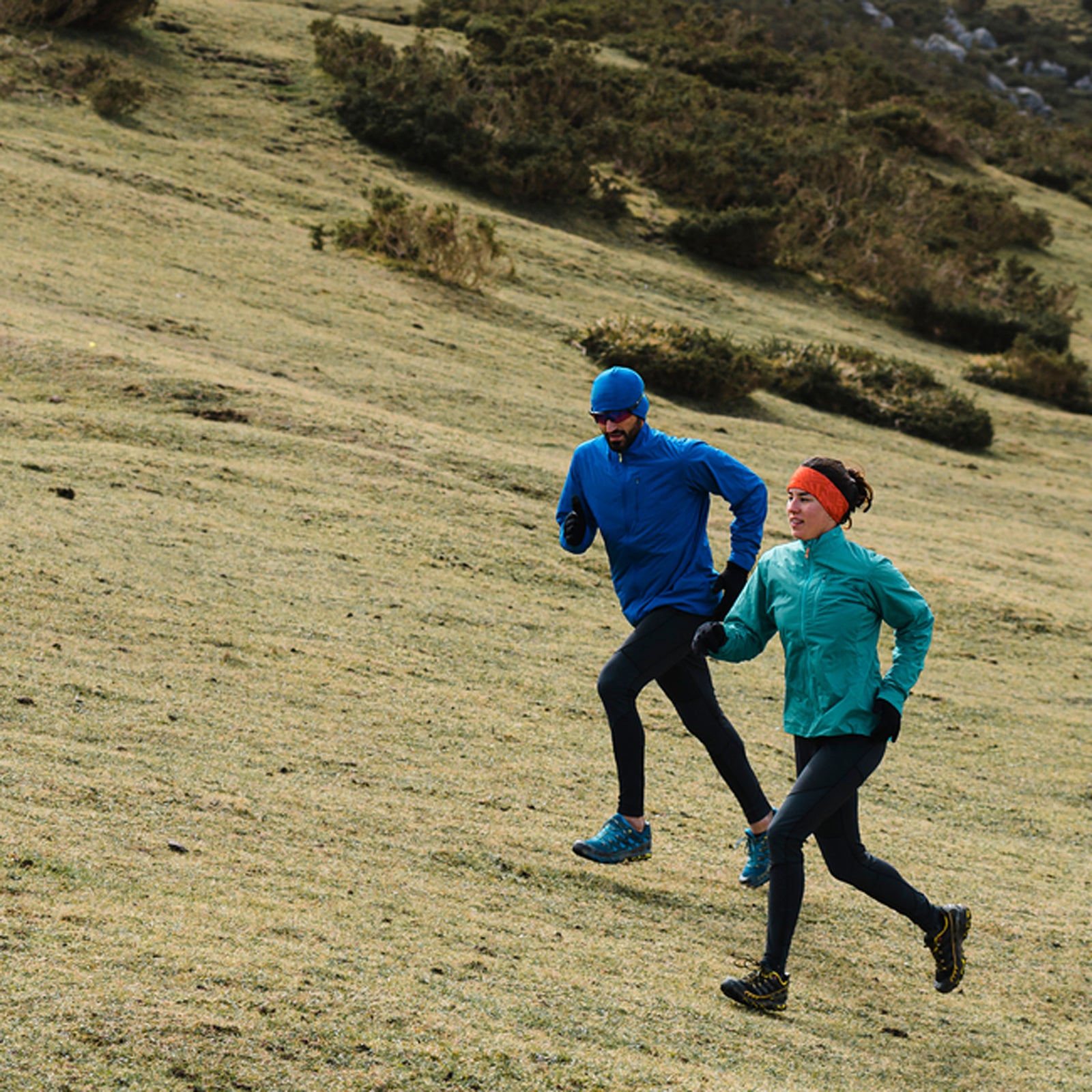There was a time, in my younger days, when I thought I would never walk during a run. I abandoned that philosophy about two-thirds of the way up a mountain in Slovenia, where I was competing in the 2010 World Mountain Running Championships. The course climbed a little over 4,000 feet in 7.5 relentless miles. During one particularly steep section, I finally gave in and started to walk. To my surprise, I didn’t lose any ground to the runners around me. Lesson learned, and I’ve been less dogmatic ever since.
I’m not alone, though. Even among serious trail runners, there’s sometimes a tendency to keep running at all costs, according to Jackson Brill, a Salomon-sponsored trail runner and graduate student in Rodger Kram’s Locomotion Laboratory at the University of Colorado. But when the hills get steep enough, walking becomes inevitable—and the decision about when to switch back and forth between gaits is among the key tactical choices trail competitors have to make. As it happens, Brill and his colleagues have been researching this problem for several years, and a pair of recent studies offer some interesting new insights. The bottom line: “Our research,” Brill says with tongue in cheek, “gives people permission to walk if they want.”
Yes, It’s Running
To understand the transition between running and walking, you have to start with a simpler question: is there really any difference between them on the steepest slopes? Under normal circumstances, one of the key distinctions between the two gaits is that you always have at least one foot on the ground when you’re walking, whereas you leave the ground between each step when you’re running. But that rule of thumb breaks down on steep hills: even when you’re “running,” you never fully lose contact with the ground.
Not convinced? Take a look at this 2015 video of former Locomotion Lab researcher Wouter Hoogkamer running on the world’s steepest treadmill, which is jury-rigged to go all the way up to 45 degrees (i.e. a 100 percent grade). He looks to me like he’s running, but he always has one foot on the ground.
Kram and his team broke out this same treadmill, which has been used for a bunch of previous uphill running research, for a study published over the summer in the European Journal of Applied Physiology. Led by first author Clarissa Whiting, a former Penn track star, the researchers recruited ten elite trail runners and had them run or walk on level ground and with the treadmill set to 30 degrees. That’s steep: typical gym treadmills only go up to about nine degrees, and black diamond ski runs tend to be around 30 degrees.
Sure enough, even though the runners always had one foot on the ground, there were distinctive differences between uphill running and walking. One clue was the stride pattern: on the slope, cadence was 40 percent quicker for running than walking, and feet stayed on the ground for 40 percent less time—a similar pattern, though less pronounced, to what you’d see on level ground.
But the smoking gun came from an accelerometer clipped to the subjects’ waistbands, which measured the rise and fall of their center of mass. On level ground, walking produces two distinct acceleration peaks, one as you land and one as you push off. Running, in contrast, is a series of hops from one leg to the next, producing just one acceleration peak as you land and take off. The accelerometers found exactly the same patterns on the inclined treadmill, confirming that steep uphill running really is running, and not just some sort of bouncy fast-walk.
The Transition
That’s intellectually interesting, but in practice you’ll almost certainly be walking up any 30-degree hills you encounter. So in a separate study that’s currently under review (but available online as a preprint), Brill and Kram recruited another ten elite trail runners to run at zero, five, ten, and 15-degree slopes. The goal was to understand what prompts people to switch from a run to a walk or vice-versa, and determine whether our natural inclinations also correspond to the most efficient approach.
There’s been lots of research on the walk-run transition on level ground. At slow speeds, we burn less energy walking than running; at fast speeds, it’s the other way around. Scientists used to assume that the decision to switch from walking to running was simply a matter of sticking with the most efficient stride. But a series of studies since the 1990s have found that we actually tend to break into a run at slightly slower-than-expected speeds, when walking would actually be more energetically efficient.
There’s no consensus on why this happens, but one theory is that certain muscles in the calves or shin get fatigued or have trouble producing enough force during fast walking, so it’s more comfortable to run even if it costs a bit of extra energy. This makes intuitive sense: think about the feeling of walking so fast that you decide to break into a run. You switch because it’s uncomfortable, not because you’re out of breath.
Brill and Kram found that this pattern persisted at slopes up to ten degrees: the subjects switched from walking to running at a slower speed than the energetically optimal transition. But at the steepest slope of 15 degrees, the difference disappeared and they started running precisely when it became more efficient than walking. Once you’re going up a steep enough hill, it’s hard work regardless of whether you’re walking or running, so it appears that the desire to save energy and be as efficient as possible takes over.
Into the Wild
There’s another more subtle difference between level ground and steep uphills, Kram points out. On the flats, there’s not much ambiguity about whether you should walk or run. At any given speed, one feels right and the other feels wrong. In the mountains, on the other hand, there’s a pretty broad range of conditions where the decision is ambiguous. When you’re walking, you get the feeling that you’d probably be more comfortable running. And that may be true for a brief period of time after you switch, but pretty soon you get the sense that walking might have been more comfortable after all. There’s no stable equilibrium; you oscillate back and forth.
Another detail from Whiting’s study offers some possible insight on this. She attached electrodes to four different leg muscles in her subjects to compare muscle activation under the various testing conditions. The soleus, one of two main calf muscles, showed 36 percent less activity per stride during steep uphill running than during steep uphill walking, which is consistent with the idea that local muscle fatigue triggers the transition. You walk until your legs—and perhaps the calves in particular—get too uncomfortable. Then you start running, which initially feels better but eventually leaves you more out of breath, so you switch back to walking, and the cycle repeats.
For a competitive trail runner like Brill, it would be nice to take away some practical insights about when to switch. In his study, he also tested heart rate as a proxy for figuring out the most efficient transition point. While the heart rate values did correlate with energy consumption, there was too much individual variation to make it useful in the real world. Brill’s next study, when pandemic, fire, and other disruptions permit, will involve trail runners walking, running, or choosing their own mix of the two while climbing an actual mountain. The goal, after all, is to be as fast as possible, not as efficient as possible.
For now, Brill will stick to the approach he’s figured out through trial and error, relying on his intuition about which gait feels best at any given moment. He tries not to switch back and forth too frequently, sticking with each gait for at least 15 to 30 seconds. He doesn’t consult a heart-rate monitor. “It’s great that we’ve done all this research,” he says. “But when I hit the trail I pretty much throw it out the window.”
For more Sweat Science, join me on Twitter and Facebook, sign up for the email newsletter, and check out my book Endure: Mind, Body, and the Curiously Elastic Limits of Human Performance.


